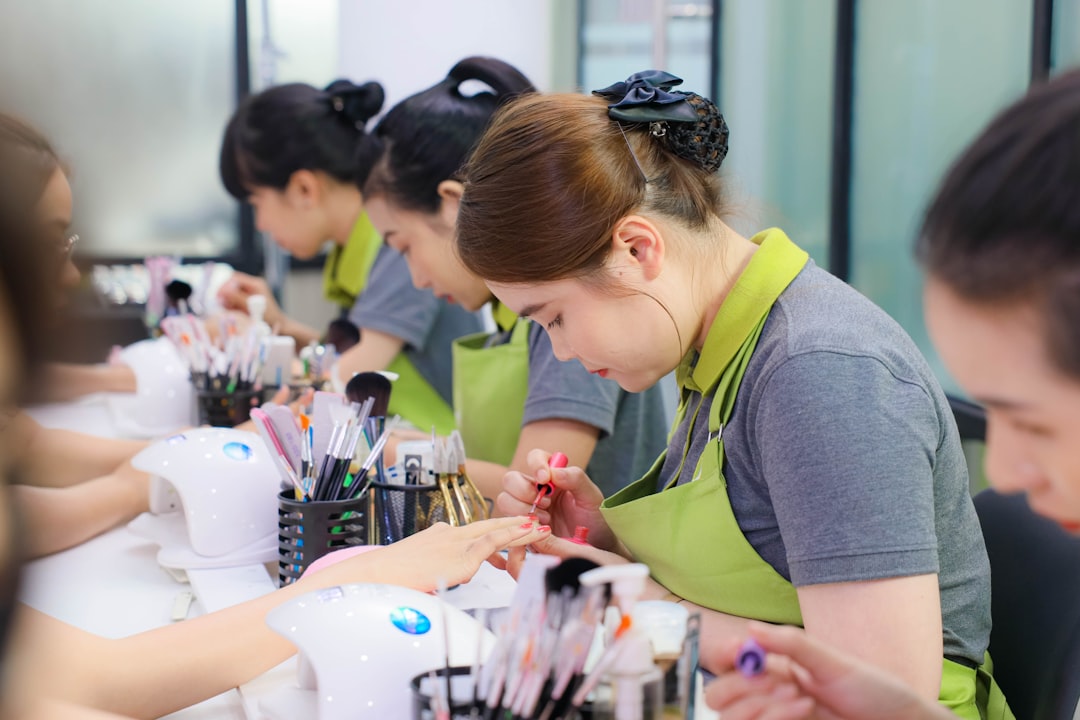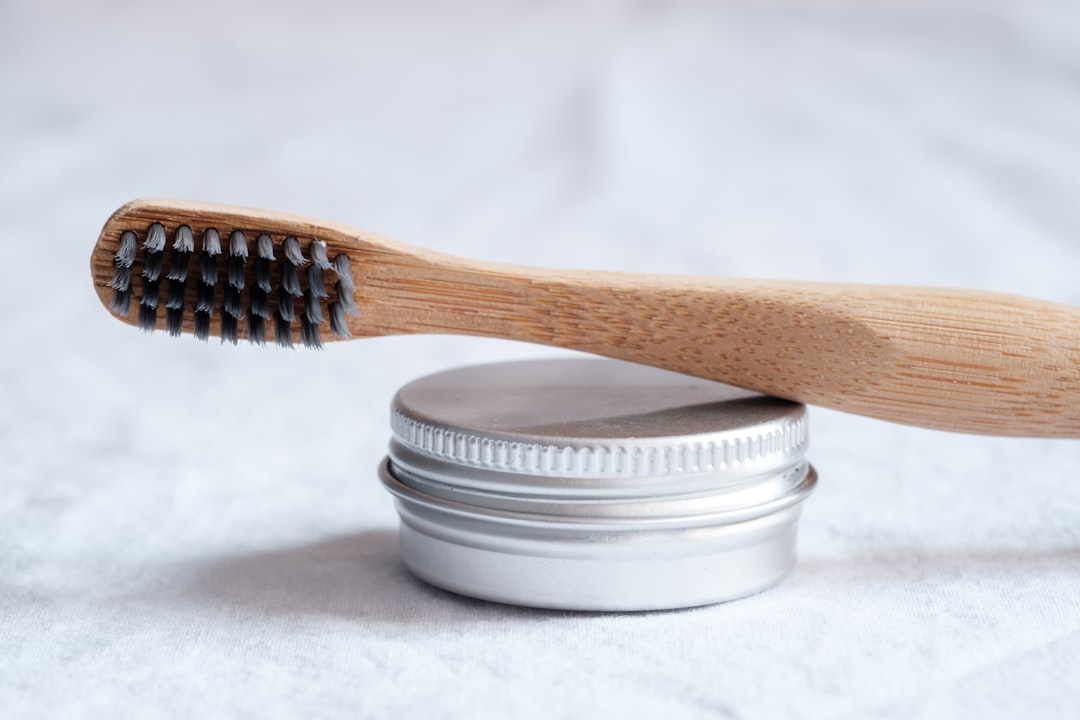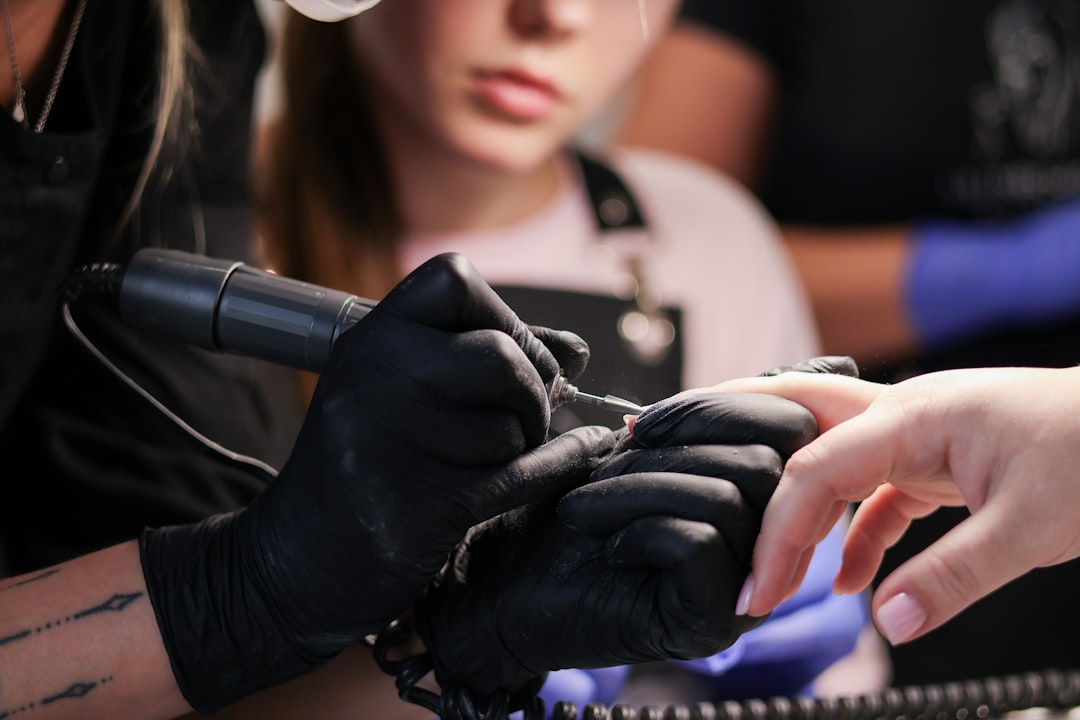

Engage prospects with a scan and streamline customer engagement with FREE QR code marketing tools by Sona – no strings attached!
Create a Free QR CodeFree consultation

No commitment

Engage prospects with a scan and streamline customer engagement with FREE QR code marketing tools by Sona – no strings attached!
Create a Free QR CodeFree consultation

No commitment
QR codes have become essential tools in today's beauty equipment repair services, transforming the way businesses connect offline engagement with online action. For beauty equipment repair companies, QR codes offer a frictionless solution to connect customers, technicians, and teams, enabling seamless communication without extra apps or complicated steps.
Salon and spa operators face challenges such as delayed repair requests, missed high-value service leads, and paper-based processes that hinder timely responses. By implementing QR codes, businesses can easily capture every service opportunity, ensure swift maintenance, and stop leads from falling through the cracks.
This article explores how beauty equipment repair providers can use QR codes to modernize customer experiences, improve operations, and boost ROI, all while solving common problems like incomplete data capture and missed service engagement.

QR codes connect the physical salon setting to digital systems, helping teams reduce repair times and improve customer satisfaction. Traditional paper tickets, handwritten maintenance logs, and printed instruction sheets often get lost or become outdated, leading to missed leads and slow service. Replacing these analog workflows with QR-enabled, trackable processes provides a real-time, accurate picture of demand and performance.
Start by mapping the touchpoints where friction happens most often. For salon teams, that usually means in-room devices, back-of-house maintenance stations, packaging and manuals, and post-service paperwork like invoices or warranty cards. Assign a QR code to each point and connect it to a specific action: report an issue, request a quote, review a technician, download a setup guide, or check warranty status. With a platform like Sona QR, you can manage all codes in one place, update destinations without reprinting, and monitor scans by device, time, and location.
With modern QR solutions, all service requests and leads are immediately logged and managed through one workflow. Dynamic codes feed accurate data into your CRM, marketing tools, and operations hub, so nothing slips through the cracks. Over time, you can benchmark performance, identify common failure points by brand or model, and allocate resources to the highest-value accounts. Start creating QR codes for free.

Repair teams often lose visibility when service requests start offline. A front-desk staffer writes a note that never gets submitted, a client mentions a problem verbally, or a device manual sits in a drawer while issues escalate. Without digital tracking, high-intent moments never reach your service team or sales pipeline. QR codes solve this gap by turning physical interactions into digital actions in a single scan. For additional salon-specific applications, explore salons and studios.
For salons and spas, speed matters. No one wants to pause revenue-generating treatments because a steamer or laser device failed. QR codes give teams a fast, app-free way to submit a repair request, consult a setup guide, or contact support. Dynamic codes let you update destinations as products evolve or instructions improve, keeping your communications accurate without reprinting labels or manuals, especially in health and beauty.
QR codes make routine materials such as appointment cards, invoices, brochures, and service tags work harder. A receipt can link to a feedback form and a maintenance plan; a manual can lead to onboarding videos and spare parts ordering. The result is a connected ecosystem that increases responsiveness and revenue while improving the customer experience.
Different scenarios call for different QR code formats. Choosing the right one ensures scanners land exactly where you want them and take the intended action. In beauty equipment repair, the most useful formats usually lead to service forms, how-to content, warranty lookups, and quick contact options that speed resolution.
Dynamic QR codes are especially valuable. They let you change destinations as your processes evolve, add campaign tracking parameters, and analyze scans over time. Static codes can work for fixed assets such as downloadable PDFs or a permanent phone number, but do not offer flexibility or analytics.
In this vertical, web links to dynamic forms and how-to libraries usually deliver the most value. They enable rich data capture, step-by-step troubleshooting, and accurate routing. vCards are helpful for VIP accounts and emergency escalation. SMS and email templates reduce friction for teams that rely on mobile devices during busy shifts.
Salons and spas often miss growth because repair requests and leads are trapped in paper forms or rely on verbal communication. QR codes help you capture every inquiry, attribute it correctly, and act while intent is high. They also extend your reach into marketing and sales by connecting offline materials to online conversion paths. For broader campaign ideas, see this QR marketing guide.
Think about your equipment’s full lifecycle: installation, daily use, periodic maintenance, occasional repairs, and end-of-life replacement. Every stage presents opportunities to engage your audience, collect data, and create value. QR codes help you do this consistently and at scale.
Each placement connects an operational touchpoint to your pipeline. You will know which assets generate the most engagement, where issues originate, and how quickly your team responds.

The most valuable QR use cases solve real operational pain: slow responses, poor data quality, and missed revenue. By placing the right codes in the right places, you can make every step of the service journey digital, measurable, and accountable.
Start with three to five use cases that address immediate bottlenecks. Then expand your program to include marketing, customer success, and partner workflows. The following examples are proven across salon and spa environments.
Organizations that deploy these use cases often see faster time-to-resolution, lower call volume for basic issues, and increased maintenance plan adoption. They also capture better data for forecasting, training, and product improvements.
Each QR scan is a signal: who scanned, where, when, and for what purpose. By placing unique codes across your environment, you can automatically segment your audience and tailor follow-up. Salon owners behave differently from independent technicians; after-hours emergency requests require different handling than scheduled maintenance. QR data gives you the context needed to respond with relevance.
Sona is an AI-powered marketing platform that turns first-party data into revenue through automated attribution, data activation, and workflow orchestration, helping teams unify attribution with activation. Use dynamic codes and standardized naming conventions so segments are easy to interpret and sync to your CRM and ad platforms. With Sona QR, you can create unique codes for each placement, embed UTM parameters, and feed scans into tools like HubSpot, Salesforce, and Meta Ads for automated workflows and retargeting. See intent-driven retargeting for a tactical framework.
When every code is a smart entry point to your funnel, you replace guesswork with behavior-based targeting. That leads to more timely outreach, higher conversion rates, and better use of sales resources.
QR codes function as connectors across your offline and online campaigns. They reduce friction in the moment, while also giving you analytics on materials that were previously hard to measure. In beauty equipment repair, this means every trade show booth, brochure, and invoice becomes a trackable channel that feeds your CRM with real intent data.
A strong multichannel strategy uses QR codes to link each touchpoint to a specific next action. You can then map scan activity to buyer journeys and attribute revenue to the placements that work. Platforms like Sona QR centralize code creation, scan tracking, and integrations so you can manage campaigns at scale.
By weaving QR codes into channels you already use, you extend the reach and measurability of your marketing without adding complexity for your audience.
Launching a QR program is straightforward when you follow a structured plan. The right framework ensures your codes are scannable, your data is usable, and your campaigns are aligned with real business goals. Use this checklist to move from idea to impact, then iterate based on what the data tells you.
Before you begin, gather the stakeholders who will create, deploy, and act on scan data: operations leaders, field technicians, front desk staff, marketing, and sales. Align on goals, destinations, and responsibilities so that every scan triggers a clear next step.
Start by selecting a use case that fixes a costly bottleneck or accelerates revenue. Define a clear outcome, then choose the QR destination that makes that outcome effortless.
Provide a baseline metric so you can measure improvement: average time to first response, scan-to-ticket conversion, or cost per lead at events.
Decide between static and dynamic QR codes based on your need for flexibility and data. In most service environments, dynamic codes are the right choice because they support real-time analytics and easy editing.
Sona QR supports both static and dynamic codes, centralized management, and easy integrations for real-time reporting.
Good design and clear intent drive scans. Codes must be visible, accessible, and paired with a benefit-driven call to action. Test in real environments to ensure reliability.
When in doubt, print larger and use high-contrast colors for maximum reliability in salon lighting.
Roll out codes where they will be most useful and most likely to be scanned. Start with high-traffic or high-friction points so you see returns quickly and can build internal momentum.
A phased deployment prevents overload. Start with one department or region, measure results, then expand.
Measurement turns scans into outcomes. Use your analytics to refine placements, improve CTAs, and upgrade destinations. Share wins internally to drive adoption.
Once you find top-performing placements and messages, scale them across locations and campaigns.

For many providers, the challenge is not getting scans but proving impact. You need to show how scans drive requests, how requests convert to appointments, and how appointments lead to revenue. Without a connected view, you cannot optimize spend or prioritize efforts.
Sona QR and Sona.com close this loop by capturing scan context, syncing it to your CRM, and attributing outcomes across the journey. You can see which placements drive engagement, which offers convert, and which accounts are ready for an upsell. This turns QR from a utility into a performance channel.
When analytics show that a particular code on laser devices drives high-value service plans, you can replicate that success on similar equipment and materials. This creates a repeatable, data-driven growth engine.
Scaling QR success requires consistent execution across teams, channels, and materials. Focus on clear attribution, seamless follow-ups, and staff education so that every scan feels useful and rewarding. For additional sector inspiration, browse beauty QR examples.
Choose a few best practices that align with your environment and tools. The right combination reduces friction, boosts adoption, and maintains data quality as you grow.
Two creative deployment ideas: print QR codes on technician lanyards that link to their certification profiles and contact details; place a QR code on maintenance stickers that opens a calendar to schedule the next preventive visit with one tap.

Beauty equipment repair teams across salons, med spas, and distributors already use QR codes to reduce downtime and raise customer satisfaction. The following examples illustrate how simple placements can create measurable gains in speed, visibility, and revenue.
A salon chain prints QR codes on all high-value devices. Staff scan to log issues, upload photos, and trigger same-day service. The company sees a significant reduction in average time-to-dispatch and captures a surge in accurately triaged tickets. The resulting data informs purchasing and training for specific models.
These examples prove that QR codes can turn missed interactions into captured value. By aligning each code with a clear action and a measurable outcome, you build a library of placements that compound over time.
Even simple QR deployments benefit from careful planning. A little forethought on design, placement, and workflow can prevent the most common issues. Equally important is creating a habit across your team to promote scanning and act on the data that comes in.
Avoid treating QR codes as a one-time project. They are a system that connects assets, people, and processes. Review and refine regularly to maintain relevance and performance.
By tackling these details, you minimize friction and give your QR program the foundation it needs to scale.
QR codes are not just convenient; they are key tools for modernizing beauty equipment repair services. By turning every piece of equipment, every invoice, and every service call into a digital entry point, you repair physical-to-digital gaps that drain revenue and frustrate customers. Teams gain faster repairs, clearer triage, and higher satisfaction scores through workflows that start with a single scan.
Managers also benefit from visibility. Scan data and linked analytics show which materials and placements drive action, which accounts need attention, and where to invest next. When connected to platforms like Sona QR and Sona.com, you can attribute scans to pipeline and revenue, proving the impact of your offline-to-online strategy.
With QR codes in place, each scanned interaction becomes an opportunity for better engagement, operational efficiency, and business growth. Start small with a few high-impact placements, measure what works, and expand methodically. The pain points you overlook today will become the wins you can scale tomorrow.
QR codes have revolutionized the beauty equipment repair services industry by transforming how providers deliver timely access to critical information and support. Whether it’s simplifying appointment scheduling, providing instant troubleshooting guides, or tracking service history, QR codes replace cumbersome manual processes with seamless, mobile-friendly solutions that enhance both technician efficiency and customer satisfaction. Imagine instantly connecting clients to repair resources or warranty details with just a scan—streamlining operations and boosting trust in your service.
With Sona QR, you can effortlessly create dynamic, trackable QR codes that update in real time without the need for reprinting, enabling you to monitor engagement down to each scan and optimize your repair workflows. This means fewer delays, faster resolutions, and a clear line from customer interactions to increased revenue. Start for free with Sona QR today and empower your beauty equipment repair services to deliver smarter, faster, and more connected care.
Use QR codes provided by repair services to easily connect with technicians, submit repair requests, and access support without extra apps or complicated steps.
Common issues include device malfunctions, delayed maintenance, missing troubleshooting guidance, and the need for parts replacement or calibration.
The article does not specify repair costs as it focuses on improving repair service workflows using QR codes.
Repairing reduces downtime, lowers costs, improves customer satisfaction, and extends equipment life while enabling data capture for better maintenance planning.
Use QR codes linked to safety instructions, maintenance logs, and setup guides to promote proper use and timely upkeep that prevent damage.
Signs include device malfunction, unusual noises, failure to start treatments, or alerts that can be reported quickly via QR code scans on the equipment.
Repair times vary, but QR codes help reduce delays by enabling instant service requests and faster technician scheduling.
The article focuses on service workflows and does not address tools needed for repairs.
QR codes can provide access to troubleshooting guides, FAQs, and setup videos to help staff self-serve simple fixes before calling technicians.
Maintain equipment by regularly updating digital maintenance logs via QR codes, following safety protocols, scheduling preventive visits, and using accessible setup guides.
Use Sona QR's trackable codes to improve customer acquisition and engagement today.
Create Your FREE Trackable QR Code in SecondsJoin results-focused teams combining Sona Platform automation with advanced Google Ads strategies to scale lead generation

Connect your existing CRM

Free Account Enrichment

No setup fees
No commitment required

Free consultation

Get a custom Google Ads roadmap for your business






Launch campaigns that generate qualified leads in 30 days or less.
